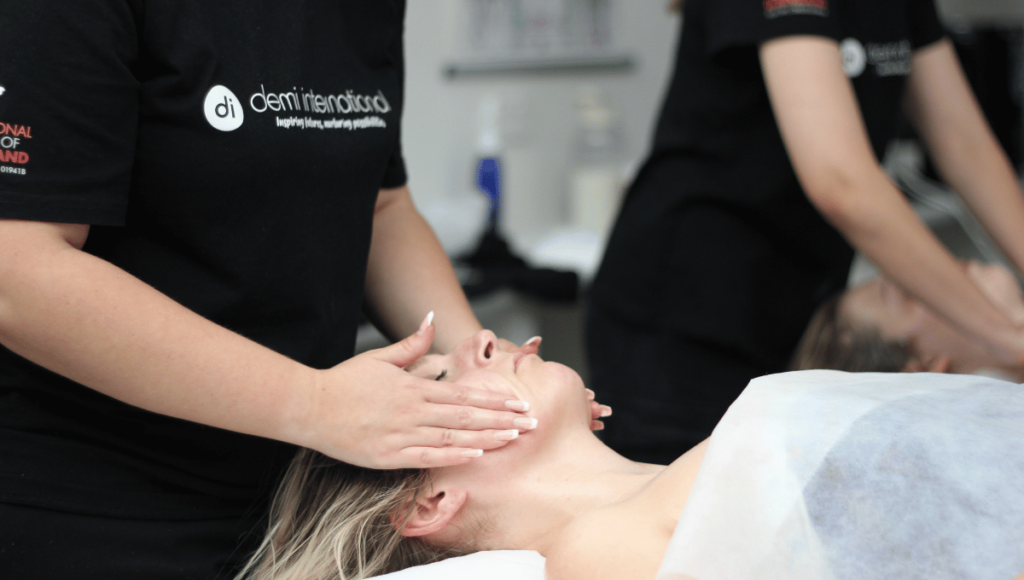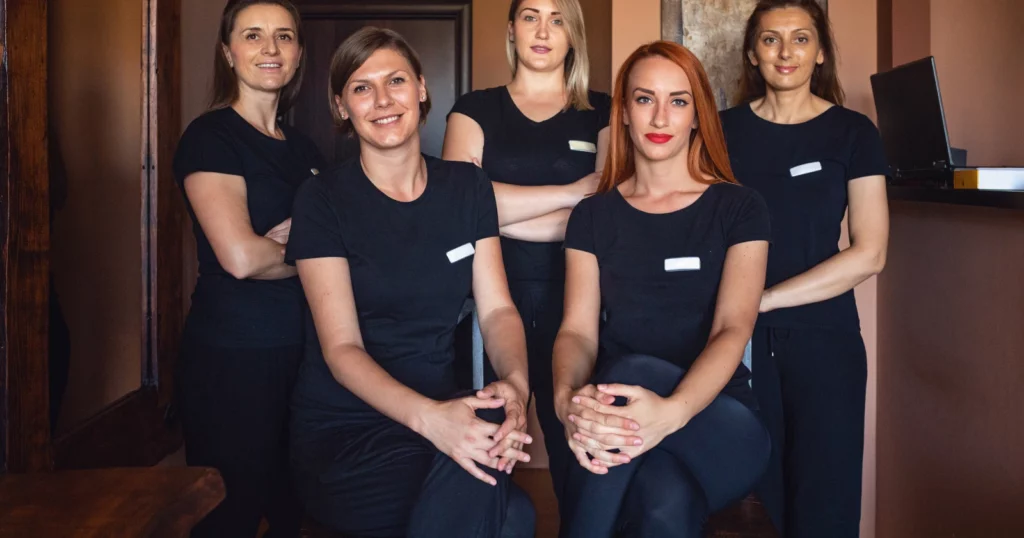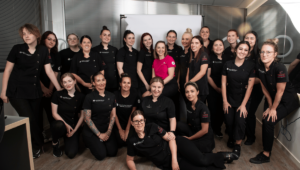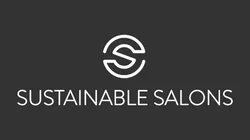In a world obsessed with beauty — and at a time when looking and feeling good has never been more important — it’s no wonder the talents of skilled beauty professionals are in need.
You’ve likely already heard the news that the beauty industry is booming. But in an even more promising development, it shows no sign of slowing down. Recent stats predict that Australia’s beauty and personal care market will grow a further 4.19% by 2028, meaning bigger and better opportunities for the professionals within it.
For those seeking something rewarding, innovative, and in demand, there are countless career opportunities in the beauty industry to consider. When discussing the most popular professions, beauty therapists, cosmetologists, and estheticians are always at the top of the list.
Today, we’ll explore what each of these roles entails. Plus, discover the educational pathways and requirements to step into these popular professions in the beauty industry.
What is a beauty therapist?
A beauty therapist is a trained professional who provides non-medical facial and body treatments to clients. In addition to services performed, they also recommend products and aftercare to clients.
Beauty therapists can work in a variety of settings and often with a lot of flexibility. Common workplaces include salons and spas, waxing salons, nail salons, and private home and mobile beauty therapy and makeup services.
Better still, the profession is thriving. According to Seek, a 12.2% job demand growth is predicted in the next five years. With a current salary of $63,000 in Australia, higher earnings are possible, dependent on experience, skill level, and services provided.
To become a beauty therapist, a formal qualification is recommended. At a minimum, a course like the Certificate III in Beauty with Makeup Specialty can equip graduates with the skills required to provide beauty salon services, including:
- lash and brow treatments
- tanning
- makeup application
- waxing
- manicures and pedicures
Beauty therapists wishing to perform additional services, including body massage and facial treatments, can pursue further training and education. Cosmetology might be ideal for those seeking a career that lets them deliver a broader and more advanced scope of beauty services.

What are cosmetologists?
Although a more common job title in the United States than in Australia, the role of a cosmetologist is roughly the same. Professionally, they sit somewhere between a beauty therapist and an aesthetician, focused on the beautification of their clients.
These professionals are often trained to perform more advanced services, including:
- skincare treatments
- cosmetics and makeup
- hair removal
- massage
- nail technology
Due to the advanced capabilities of the role, a cosmetologist might undertake a higher qualification, like a Diploma of Beauty Therapy. At this level, they learn the fundamentals of beauty therapy and the skills to work in various settings, including retail stores, salons, spas, and running their own business.
The earning potential for a cosmetologist depends on the role, their experience, and where they work. For example, a cosmetologist specialising in nail technology might earn $30.91 an hour. Otherwise, according to Indeed, a skin specialist cosmetologist working in a private salon may earn.
Beyond cosmetology, those interested in beauty therapy and hoping to focus on skincare predominantly may consider becoming an aesthetician.
What are estheticians?
The terms ‘esthetician’ and ‘aesthetician’ are sometimes used interchangeably, but the roles differ slightly. An esthetician is another term for a beauty therapist trained in services like facials, makeup application, and body hair treatments.
On the other hand, aestheticians are clinicians explicitly trained in skin care. Depending on their training, qualifications, and areas of specialisation, they might perform services including:
- facials
- hair removal treatments
- laser skin treatments
- chemical peels
- microdermabrasion
- scar and blemish reduction
In Australia, an aesthetician earns an estimated $64.98 per hour. As such, these higher-paid and more technically advanced roles require additional qualifications. At a minimum, though, they may hold a Diploma of Beauty of Therapy. Other qualifications and certifications relevant to their role can further enhance their skills and expertise.
For example, Queensland aestheticians must hold a safety licence to perform laser therapy. A laser safety course enables them to perform these services safely and apply for a Laser Safety Certificate — a popular supplemental accreditation.
Both aestheticians and estheticians must stay on top of trending skincare and beauty services to ensure they’re offering the latest treatments to their clients. As such, an ongoing commitment to learning and upskilling is vital.
Finding the right path in the beauty industry
Whether it’s a beauty therapist, cosmetologist, or esthetician you’ve set your sights on, Demi International has the right course to help you achieve your goal. Speak to one of our advisors today and begin your rewarding career in the beauty industry.







